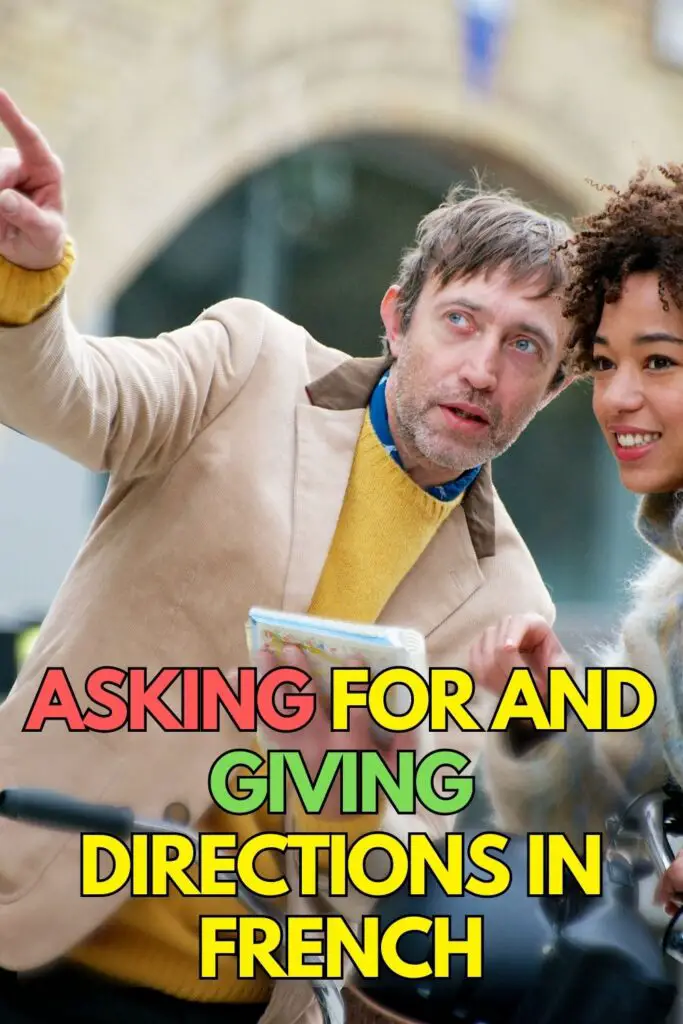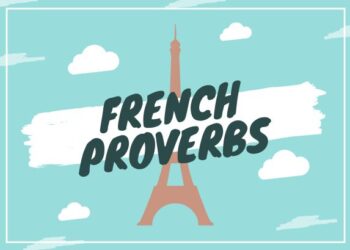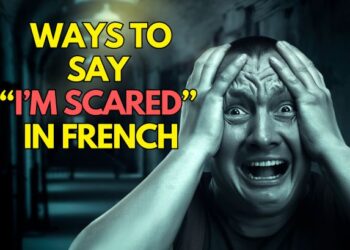Giving and asking for directions in another language can seem difficult. But with just a little bit of practice, you’ll be navigating the streets of France like a pro! We’ll teach you key direction words like “left”, “right”, and “straight ahead” in French. You’ll also learn how to politely ask “Where is…?” and say phrases like “Excuse me, can you help me?”
Whether you’re looking for the Louvre museum or the nearest bakery, you’ll be covered. We’ve got tips for understanding directions, asking for help, and using gestures too. From street names to landmarks, you’ll pick up all the vocabulary you need.

What are the basic French direction words?
Giving directions in French starts with learning some key direction vocabulary words. Here are some of the most important ones:
- À droite – To the right
- À gauche – To the left
- Tout droit – Straight ahead
- En face de – In front of
- Au coin de la rue – At the corner of the street
- Devant – In front of
- Derrière – Behind
- Prendre à droite – Turn right
- Prendre à gauche – Turn left
- Tourner à droite – Turn right
- Tourner à gauche – Turn left
- Continuer tout droit – Continue straight ahead
- Suivre – Follow
- Traverser – Cross
- Passer – Go by
- Descendre – Go down
- Monter – Go up
- Faire demi-tour – Turn around/make a U-turn
- Au coin de la rue – At the corner of the street
- Près de – Near
- Loin de – Far from
- En bas – Down
- En haut – Up
- À côté de – Next to
- Au rond-point – At the roundabout
- Au feu – At the traffic light
- Au stop – At the stop sign
- Rue – Street
- Boulevard – Boulevard
- Avenue – Avenue
- Impasse – Dead end
- Tournez – Turn
Start by learning these basic words and phrases. With just a little practice, you’ll be able to understand simple direction instructions in French.
What are some key French direction phrases?
Here are some key French phrases that will help you understand directions:
- Prenez la première rue à droite – Take the first street on the right
- Traversez le boulevard – Cross the boulevard
- Continuez tout droit – Continue straight ahead
- Faites le tour du rond-point – Go around the roundabout
- C’est en face du musée – It’s across from the museum
- C’est à côté de la banque – It’s next to the bank
- Vous y êtes presque! – You’re almost there!
Terms like “à côté de” (next to) and “en face de” (across from) are very helpful for understanding how close you are to your destination.
Listen for other clues like street names, landmarks, and left/right turns. Don’t be shy about asking “Pouvez-vous répéter s’il vous plaît?” (Could you repeat please?) if you didn’t catch something.
What vocabulary is needed to understand direction details?
Understanding street directions in French requires knowing more specific vocabulary. Here are some key terms:
- Au coin de – On the corner of
- A côté de – Next to
- En face de – Across from
- Tout droit – Straight ahead
- Rue – Street
- Boulevard – Boulevard
- Avenue – Avenue
- Rond-point – Roundabout
- Feux de signalisation – Traffic lights
- Virage – Turn
- Pont – Bridge
Listen for these words as helpers describe the route. Know the terms for landmarks like “église” (church) or “parc” (park) too.
With this vocabulary, you can pick out the key details you need from French direction instructions. Don’t stress about catching every word – focus on the main nouns, prepositions, and orientation words.
How do you ask for directions in French?
When you need to ask for directions in French, here are some key phrases to use:
- Où est…? – Where is…?
- Excusez-moi, pourriez-vous m’indiquer…? – Excuse me, could you show me…?
- Comment puis-je aller à…? – How can I get to…?
- C’est loin d’ici? – Is it far from here?
- Pour aller à…, est-ce que je dois tourner à droite ou à gauche? – To get to…, should I turn right or left?
Be polite and start your question with “Excusez-moi” to get the person’s attention. Then simply use “Où est…” to ask where a place is.
You can also specify that you want walking directions by saying “Comment puis-je aller à…à pied?“
Don’t forget to end your question with “s’il vous plaît” (please) to be extra polite! The most important thing is to not be afraid to ask .
What are some polite phrases to use when asking for directions?
Politeness goes a long way when asking strangers for help in French. Here are some polite phrases to use:
- Pardon, est-ce que je peux vous poser une question? – Excuse me, may I ask you a question?
- S’il vous plaît, pourriez-vous m’aider? – Please, could you help me?
- Je m’excuse de vous déranger, mais… – I’m sorry to bother you, but…
- Excusez-moi de vous interrompre… – Excuse me for interrupting…
- Je vous prie de m’excuser, mais je suis un peu perdu. – I beg your pardon, but I’m a little lost.
Starting with “Pardon” or “Excusez-moi” shows consideration before taking up their time. Saying “s’il vous plaît” and “je vous prie” makes it more polite.
Acknowledging you’re bothering them and apologizing shows humility. And don’t forget to end with “Merci!” to complete the courteous interaction.
What French phrases indicate distance to a destination?
When getting directions in French, listen for phrases that indicate how far away your destination is:
- C’est tout près d’ici. – It’s very close to here.
- C’est à deux pâtés de maisons. – It’s two blocks away.
- C’est à 100 mètres. – It’s 100 meters away.
- Ça va vous prendre 5 minutes à pied. – It will take you 5 minutes by foot.
- C’est juste au bout de la rue. – It’s just at the end of the street.
- Ce n’est pas très loin. – It’s not very far.
- Encore 500 mètres. – Another 500 meters.
- C’est à 10 minutes d’ici. – It’s 10 minutes from here.
Knowing these clues about how far away your stop is will give you confidence as you follow the directions in French.
What gestures help communicate giving directions?
When giving directions in French, gestures and body language can help communicate. Here are some useful gestures:
- Point left or right to indicate which way the person should turn.
- Hold your arm straight to point out the direction to walk.
- Make a zig-zag motion with your hand to show a winding route.
- Hold up fingers to indicate the number of blocks or meters.
- Turn your body and point to demonstrate the way.
- Rotate your finger in a circle to signify a roundabout.
- Raise your hand high to indicate to continue straight.
- Make a stopping gesture to show where to stop.
- Thumbs up or nod yes to confirm understanding.
Combining simple French direction phrases with gestures makes it easier to communicate directions clearly. Visual cues allow you to give instructions without complex descriptions. Use body language to supplement the key French words you know.
What gestures help communicate in asking for directions?
Gestures and body language can aid communication when asking for help in French. Here are some useful gestures:
- Point in the direction you want to head to indicate your destination.
- Hold up a map and point to where you want to go.
- Turn your body and point left or right to show which way you need to turn.
- Make a walking motion with your fingers to say you’ll be on foot.
- Shrug with palms up to indicate you don’t understand.
- Use a wave gesture as you say “merci!” to say thanks.
- Thumbs up to say “I understand” or “got it!”
Using gestures reduces the need for complex French explanations. Let your body language supplement what French phrases you do know. Most people will grasping your meaning through visuals.
Example giving directions to a pharmacy in French
Example 1:
Tourist: Excusez-moi, où est la pharmacie la plus proche?
Local: Ah, vous cherchez une pharmacie? Il y en a une à environ trois rues d’ici. Vous allez tourner à gauche au coin, puis continuer tout droit sur deux rues. Après ça, vous allez voir une boulangerie à droite – tournez à droite après la boulangerie. La pharmacie est juste là, à côté d’un petit café. Vous ne pouvez pas la manquer!
Tourist: D’accord, je vais tourner à gauche au coin, puis continuer tout droit deux rues. Quand je vois la boulangerie, je tourne à droite, et la pharmacie est à côté d’un café. C’est bien ça?
Local: Oui c’est ça! Continuez tout droit sur cette rue jusqu’au coin. Au feu de signalisation, tournez à gauche sur Rue de la Paix. Allez tout droit, traversez un boulevard puis un parc. Au deuxième feu de signalisation après le parc, tournez à droite sur Rue des Jardins. La boulangerie est sur le coin à votre droite. Tournez à droite après la boulangerie et la pharmacie est 30 mètres plus loin.
Tourist: D’accord, je crois que j’ai compris. Je vais aller tout droit jusqu’au feu et tourner à gauche sur Rue de la Paix. Puis tout droit jusqu’au parc, et à droite sur Rue des Jardins après le deuxième feu. Quand je vois la boulangerie, je tourne à droite et la pharmacie est juste après. Merci beaucoup pour votre aide!
Local: De rien ! N’hésitez pas à arrêter quelqu’un d’autre si vous avez besoin d’aide. Bonne journée !
Tourist: Merci, bonne journée à vous aussi !
Tourist: Excuse me, where is the nearest pharmacy?
Local: Ah, you’re looking for a pharmacy? There is one about three blocks from here. You’ll turn left at the corner, then go straight for two streets. After that, you’ll see a bakery on the right – turn right after the bakery. The pharmacy is right there, next to a small cafe. You can’t miss it!
Tourist: Okay, I’ll turn left at the corner, then go straight two streets. When I see the bakery, I turn right, and the pharmacy is next to a cafe. Is that right?
Local: Yes that’s right! Continue straight on this street to the corner. At the traffic light, turn left on Rue de la Paix. Go straight, cross a boulevard then a park. At the second traffic light after the park, turn right on Rue des Jardins. The bakery is on the corner on your right. Turn right after the bakery and the pharmacy is 30 meters further.
Tourist: Okay, I think I understood. I’ll go straight until the light and turn left on Rue de la Paix. Then straight until the park, and right on Rue des Jardins after the second light. When I see the bakery, I turn right and the pharmacy is just after. Thank you very much for your help!
Local: You’re welcome! Don’t hesitate to stop someone else if you need help. Have a nice day!
Tourist: Thank you, have a nice day too!
Example 2:
Tourist: Pardon, pourriez-vous m’indiquer le chemin pour aller au Musée d’Orsay s’il vous plaît?
Local: Bien sûr ! Le musée est situé de l’autre côté de la Seine. Du coin où nous sommes, marchez vers le sud environ 5 minutes jusqu’à ce que vous arriviez à un grand boulevard. Traversez le boulevard prudemment et continuez tout droit sur le quai pendant environ 7-8 minutes.
Vous verrez la Seine à votre droite. Continuez de marcher le long de la Seine jusqu’à ce que vous voyez le pont des Arts. Traversez le pont des Arts et le Musée d’Orsay sera juste en face de vous ! Comptez 15 minutes de marche depuis ici.
Tourist: D’accord, je vais marcher vers le sud 5 minutes jusqu’au boulevard. Je traverse le boulevard, puis je continue sur le quai le long de la Seine pendant 7-8 minutes jusqu’au pont des Arts. Je traverse le pont et le musée est en face. Est-ce bien le meilleur itinéraire pour s’y rendre à pied ?
Local: Oui, c’est le plus rapide à pied. Une autre option est de prendre le métro. Descendez à la station de métro Solferino, prenez la ligne 12 direction Mairie d’Issy. Descendez à la station Solférino. Le musée est juste en haut des escaliers lorsque vous sortez du métro.
Le métro est plus rapide que la marche si vous n’êtes pas pressé. Mais la balade le long de la Seine est plus scenique ! Laissez-moi savoir si vous avez d’autres questions.
Tourist: Je vous remercie énormément pour ces explications détaillées ! Je pense que je vais marcher pour profiter de la vue. Merci encore et bon weekend !
Local: Je vous en prie, bon weekend à vous aussi !
Tourist: Excuse me, could you show me how to get to the Musée d’Orsay please?
Local: Of course! The museum is located on the other side of the Seine. From the corner where we are, walk south about 5 minutes until you reach a large boulevard. Cross the boulevard carefully and continue straight on the quay for about 7-8 minutes.
You will see the Seine on your right. Keep walking along the Seine until you see the Pont des Arts bridge. Cross the Pont des Arts bridge and the Musée d’Orsay will be right in front of you! Count 15 minutes of walking from here.
Tourist: Okay, I’ll walk south 5 minutes to the boulevard. I’ll cross the boulevard, then I’ll continue on the quay along the Seine for 7-8 minutes until the Pont des Arts bridge. I’ll cross the bridge and the museum is in front. Is this the best walking route to get there?
Local: Yes, it’s the quickest by foot. Another option is to take the metro. Go down to the Solferino metro station, take line 12 direction Mairie d’Issy. Get off at the Solférino station. The museum is just up the stairs when you exit the metro.
The metro is faster than walking if you’re not in a hurry. But the stroll along the Seine is more scenic! Let me know if you have any other questions.
Tourist: Thank you so much for these detailed explanations! I think I’ll walk to enjoy the view. Thanks again and have a nice weekend!
Local: You’re welcome, have a nice weekend too!













